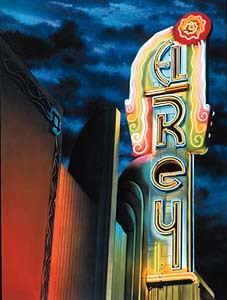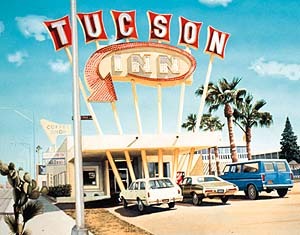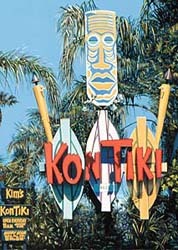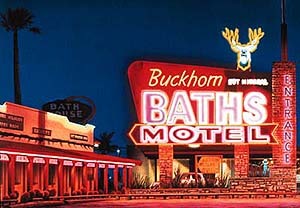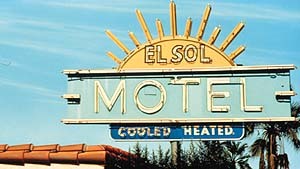In the frenzy of making quick signs using digital printers and scanners, it’s easy to forget the root of the sign. While great advances have been made in the design and creation of signs, there is something to be said for the signs of old, especially neon and electric signs from the 1950s.
James Guçwa has found a way to remember these historic signs before they completely die out. Using acrylic paints, he airbrushes photo-realistic images of old electric signs onto large canvases. As such, he not only keeps these signs alive, but shows the beauty and true art behind these signs’ design and mystique.
A New Jersey native, Guçwa showed an interest in art at an early age. Realizing this, his mother saved up for him to attend the Newark School of Fine Arts. He never completed the program, and left New Jersey to become an artist. Jumping from city to city, he discovered he could make a living as a sign painter, but he continued to create fine artwork on the side. It was while painting signs that he first noticed the beauty of aged electric signs, and started creating photo-realistic paintings of them. His break came when a gallery in Scottsdale, AZ, showed his work. From then on, he decided to quit the sign-making business and focus on his paintings.
Guçwa, now 51, has settled in a remote part of Arizona and divides his time between road trips and painting. He takes to the road to photograph signs for new paintings, concentrating on Route 66 and other old highways in the West. When he re-creates the signs on canvas, it takes a little imagination to exclude the decay that naturally comes with the signs’ aging process. However, his biggest obstacle is finding these signs. According to Guçwa, I’ve gone back for a second look at some of these places and when I got there, all I saw were bulldozers. (These signs) are disappearing fast.”
Guçwa uses a medium-weight, tightly woven cotton duck canvas on stretchers that he builds himself. To prepare the canvas and create the smoothest possible surface, he applies several coats of Liquitex acrylic gesso diluted with distilled water. He sands the canvas after applying each coat so that the texture doesn’t interfere with the painting. Also, he incorporates both hand-painting and airbrush work. Guçwa uses an Aztek 3000-S airbrush and works almost exclusively in Createx acrylics.
Fine-art lithographs are available for many of Guçwa’s pieces. For information on prints and originals, contact the Modernism Gallery, 685 Market St., San Francisco, CA. Phone: (415) 541-0461; fax: (415) 541-0425.
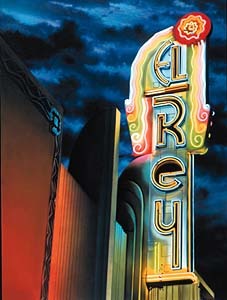

 Tip Sheet1 week ago
Tip Sheet1 week ago
 Photo Gallery2 days ago
Photo Gallery2 days ago
 Ask Signs of the Times4 days ago
Ask Signs of the Times4 days ago
 Real Deal1 week ago
Real Deal1 week ago
 Benchmarks7 days ago
Benchmarks7 days ago
 Women in Signs1 week ago
Women in Signs1 week ago
 Photo Gallery1 week ago
Photo Gallery1 week ago
 Women in Signs1 week ago
Women in Signs1 week ago
